Solar System: Things To Know This Week
Solar System: Things to Know This Week
Learn the latest on Cassini’s Grand Finale, Pluto, Hubble Space Telescope and the Red Planet.
1. Cassini’s Grand Finale

After more than 12 years at Saturn, our Cassini mission has entered the final year of its epic voyage to the giant planet and its family of moons. But the journey isn’t over. The upcoming months will be like a whole new mission, with lots of new science and a truly thrilling ride in the unexplored space near the rings. Later this year, the spacecraft will fly repeatedly just outside the rings, capturing the closest views ever. Then, it will actually orbit inside the gap between the rings and the planet’s cloud tops.
Get details on Cassini’s final mission
The von Kármán Lecture Series: 2016
2. Chandra X-Rays Pluto

As the New Horizon’s mission headed to Pluto, our Chandra X-Ray Observatory made the first detection of the planet in X-rays. Chandra’s observations offer new insight into the space environment surrounding the largest and best-known object in the solar system’s outermost regions.
See Pluto’s X-Ray
3. … And Then Pluto Painted the Town Red

When the cameras on our approaching New Horizons spacecraft first spotted the large reddish polar region on Pluto’s largest moon, Charon, mission scientists knew two things: they’d never seen anything like it before, and they couldn’t wait to get the story behind it. After analyzing the images and other data that New Horizons has sent back from its July 2015 flight through the Pluto system, scientists think they’ve solved the mystery. Charon’s polar coloring comes from Pluto itself—as methane gas that escapes from Pluto’s atmosphere and becomes trapped by the moon’s gravity and freezes to the cold, icy surface at Charon’s pole.
Get the details
4. Pretty as a Postcard

The famed red-rock deserts of the American Southwest and recent images of Mars bear a striking similarity. New color images returned by our Curiosity Mars rover reveal the layered geologic past of the Red Planet in stunning detail.
More images
5. Things Fall Apart

Our Hubble Space Telescope recently observed a comet breaking apart. In a series of images taken over a three-day span in January 2016, Hubble captured images of 25 building-size blocks made of a mixture of ice and dust drifting away from the comet. The resulting debris is now scattered along a 3,000-mile-long trail, larger than the width of the continental U.S.
Learn more
Discover the full list of 10 things to know about our solar system this week HERE.
Make sure to follow us on Tumblr for your regular dose of space: http://nasa.tumblr.com
More Posts from Ritasakano and Others
Interessante!!!

Everyone pitches in for protein synthesis! Here are three types of RNA helping your cells make proteins. Be sure to check out all our science GIFs here for your studyblrs, teacher websites, presentations, or general amusement! Just please keep our name on there and don’t sell them! :D
![Cassini: Photos Of Saturn’s Ocean Moon Enceladus, November 26th 2017: [1] [2] [3] [4] [5] [6] [7] [8]](https://64.media.tumblr.com/d9028e2e0d6a044bf7f46486fdbc2594/tumblr_ohedi4ED2U1r4o9aco1_500.jpg)
![Cassini: Photos Of Saturn’s Ocean Moon Enceladus, November 26th 2017: [1] [2] [3] [4] [5] [6] [7] [8]](https://64.media.tumblr.com/efc6e64bcc45405d8a78249cfbf2fbc6/tumblr_ohedi4ED2U1r4o9aco2_500.jpg)
![Cassini: Photos Of Saturn’s Ocean Moon Enceladus, November 26th 2017: [1] [2] [3] [4] [5] [6] [7] [8]](https://64.media.tumblr.com/c1d38d55509e4e92f02a0ce301fec091/tumblr_ohedi4ED2U1r4o9aco3_500.jpg)
![Cassini: Photos Of Saturn’s Ocean Moon Enceladus, November 26th 2017: [1] [2] [3] [4] [5] [6] [7] [8]](https://64.media.tumblr.com/d6bb6e2182bdcba5970b3495999bbe22/tumblr_ohedi4ED2U1r4o9aco4_500.jpg)
![Cassini: Photos Of Saturn’s Ocean Moon Enceladus, November 26th 2017: [1] [2] [3] [4] [5] [6] [7] [8]](https://64.media.tumblr.com/1cd24c66229f48f88a0c733c040a5039/tumblr_ohedi4ED2U1r4o9aco5_500.jpg)
![Cassini: Photos Of Saturn’s Ocean Moon Enceladus, November 26th 2017: [1] [2] [3] [4] [5] [6] [7] [8]](https://64.media.tumblr.com/118dfe8fb64f25a325170b6c9827ebad/tumblr_ohedi4ED2U1r4o9aco6_500.jpg)
![Cassini: Photos Of Saturn’s Ocean Moon Enceladus, November 26th 2017: [1] [2] [3] [4] [5] [6] [7] [8]](https://64.media.tumblr.com/e03ced7a9d7d631f52e7eb0666afa985/tumblr_ohedi4ED2U1r4o9aco7_500.jpg)
![Cassini: Photos Of Saturn’s Ocean Moon Enceladus, November 26th 2017: [1] [2] [3] [4] [5] [6] [7] [8]](https://64.media.tumblr.com/fb8ce11c6553c95ee42c031a63fa8644/tumblr_ohedi4ED2U1r4o9aco8_500.jpg)
Cassini: Photos of Saturn’s ocean moon Enceladus, November 26th 2017: [1] [2] [3] [4] [5] [6] [7] [8] Image Credit: NASA/JPL-Caltech/Space Science Institute
Tristeza! Muito descaso com a Ciência no Brasil!!
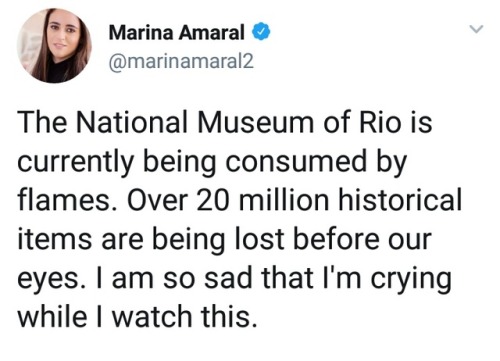




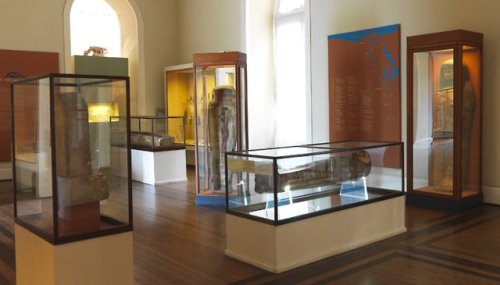

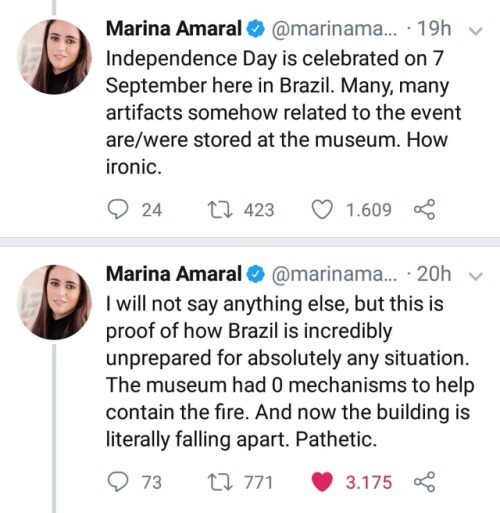
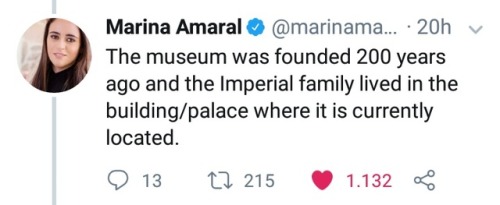
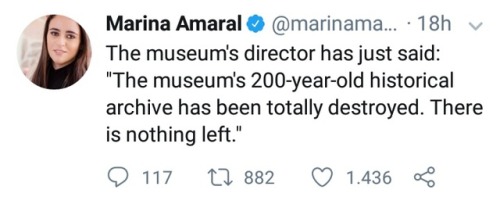
















This happened yesterday in Brazil and I’m from Mexico, but this is a major tragedy and loss to science, culture and humanity.😢💔 (source)

Well it’s Friday- and for many- it has been testing week. Great job, you made it!

@maejemison fist black woman in space and principle of the 100 Year Starship Project. #WomeninScienceBook #scientificliteracy #happyblackhistorymonth #blackhistoryshouldbecelebratedallyearlong
-
 katty2088 liked this · 2 years ago
katty2088 liked this · 2 years ago -
 vanessa-spice-runner reblogged this · 4 years ago
vanessa-spice-runner reblogged this · 4 years ago -
 tulinkiper reblogged this · 4 years ago
tulinkiper reblogged this · 4 years ago -
 vordorvitriol reblogged this · 6 years ago
vordorvitriol reblogged this · 6 years ago -
 kyu7000-blog liked this · 7 years ago
kyu7000-blog liked this · 7 years ago -
 art-hoe-2000 liked this · 7 years ago
art-hoe-2000 liked this · 7 years ago -
 alex-webster liked this · 7 years ago
alex-webster liked this · 7 years ago -
 cubanaj1-blog liked this · 8 years ago
cubanaj1-blog liked this · 8 years ago -
 cookiemarimonster liked this · 8 years ago
cookiemarimonster liked this · 8 years ago -
 best-hotels-posts reblogged this · 8 years ago
best-hotels-posts reblogged this · 8 years ago -
 joellehelou8-blog liked this · 8 years ago
joellehelou8-blog liked this · 8 years ago -
 greybeard55 reblogged this · 8 years ago
greybeard55 reblogged this · 8 years ago -
 greybeard55 liked this · 8 years ago
greybeard55 liked this · 8 years ago -
 cosmicripple reblogged this · 8 years ago
cosmicripple reblogged this · 8 years ago -
 amabilis liked this · 8 years ago
amabilis liked this · 8 years ago -
 denissegnz liked this · 8 years ago
denissegnz liked this · 8 years ago -
 xjii liked this · 8 years ago
xjii liked this · 8 years ago -
 polivien1-blog liked this · 8 years ago
polivien1-blog liked this · 8 years ago -
 mcm-curiosity liked this · 8 years ago
mcm-curiosity liked this · 8 years ago -
 oniwoolf-blog liked this · 8 years ago
oniwoolf-blog liked this · 8 years ago -
 set-saiil liked this · 8 years ago
set-saiil liked this · 8 years ago -
 ackwok reblogged this · 8 years ago
ackwok reblogged this · 8 years ago -
 artsdrawingsandgamesold-blog liked this · 8 years ago
artsdrawingsandgamesold-blog liked this · 8 years ago -
 bertoltblecht liked this · 8 years ago
bertoltblecht liked this · 8 years ago -
 o-sacra-virgo-laudes-tibi reblogged this · 8 years ago
o-sacra-virgo-laudes-tibi reblogged this · 8 years ago